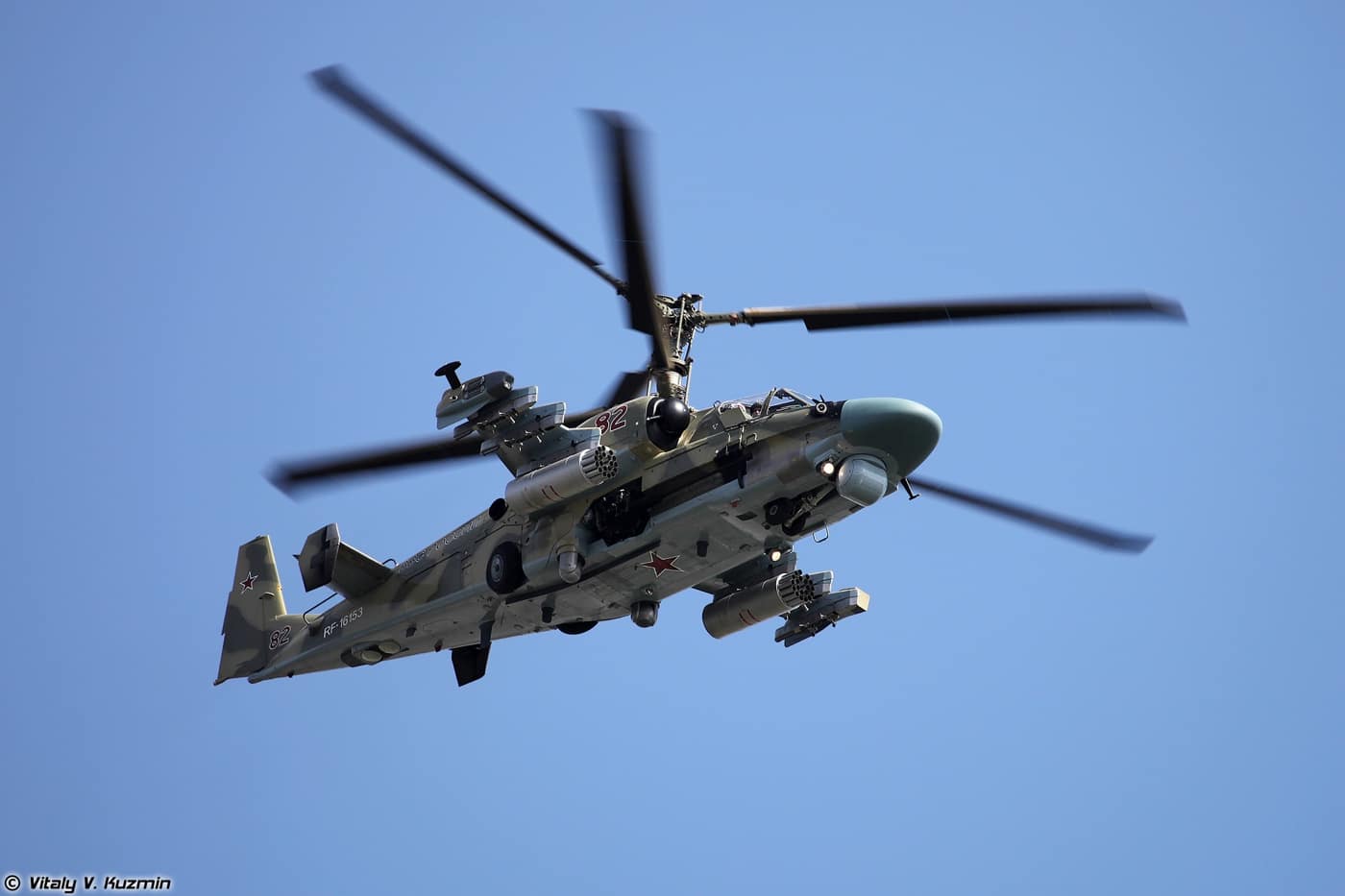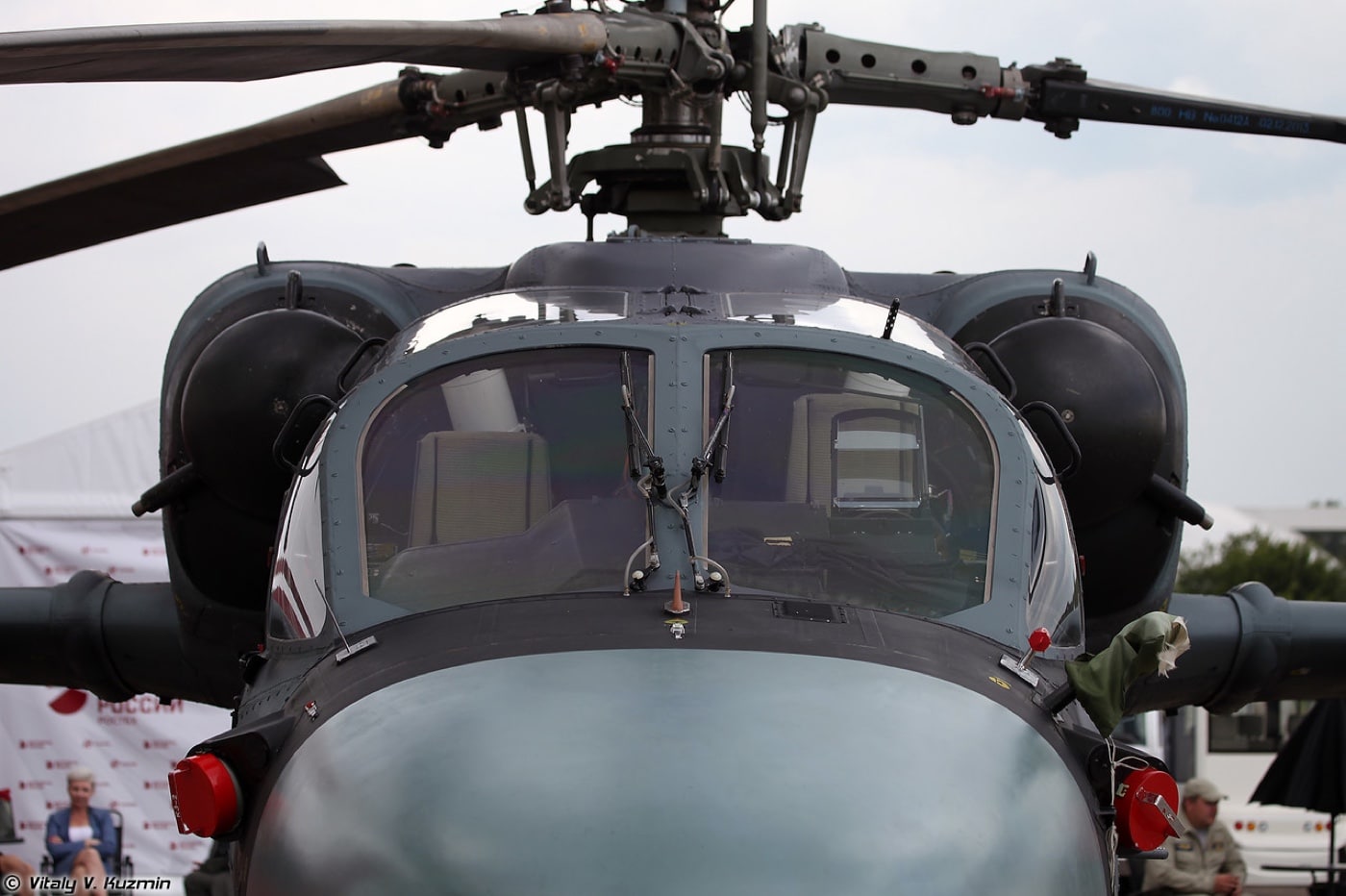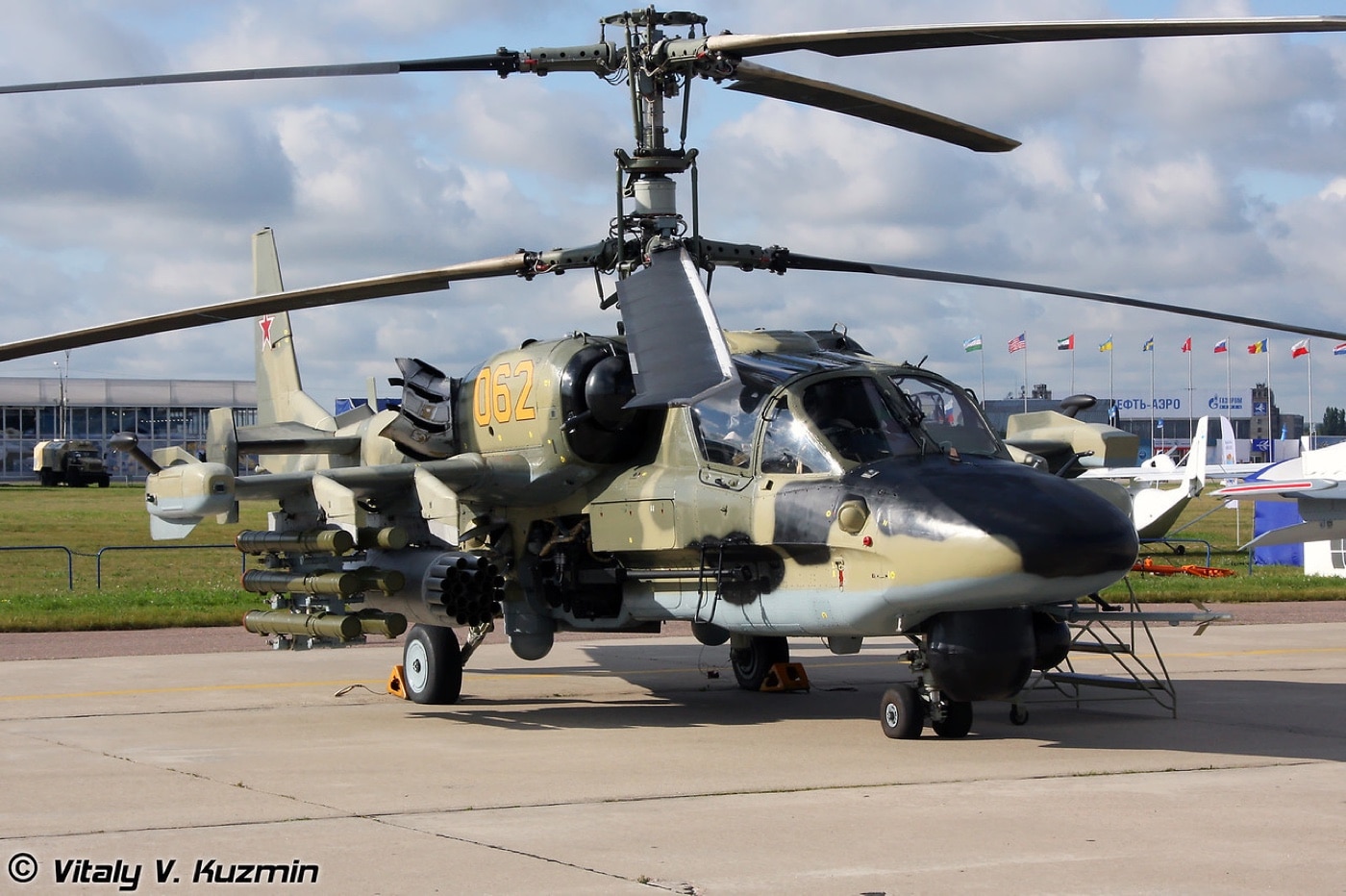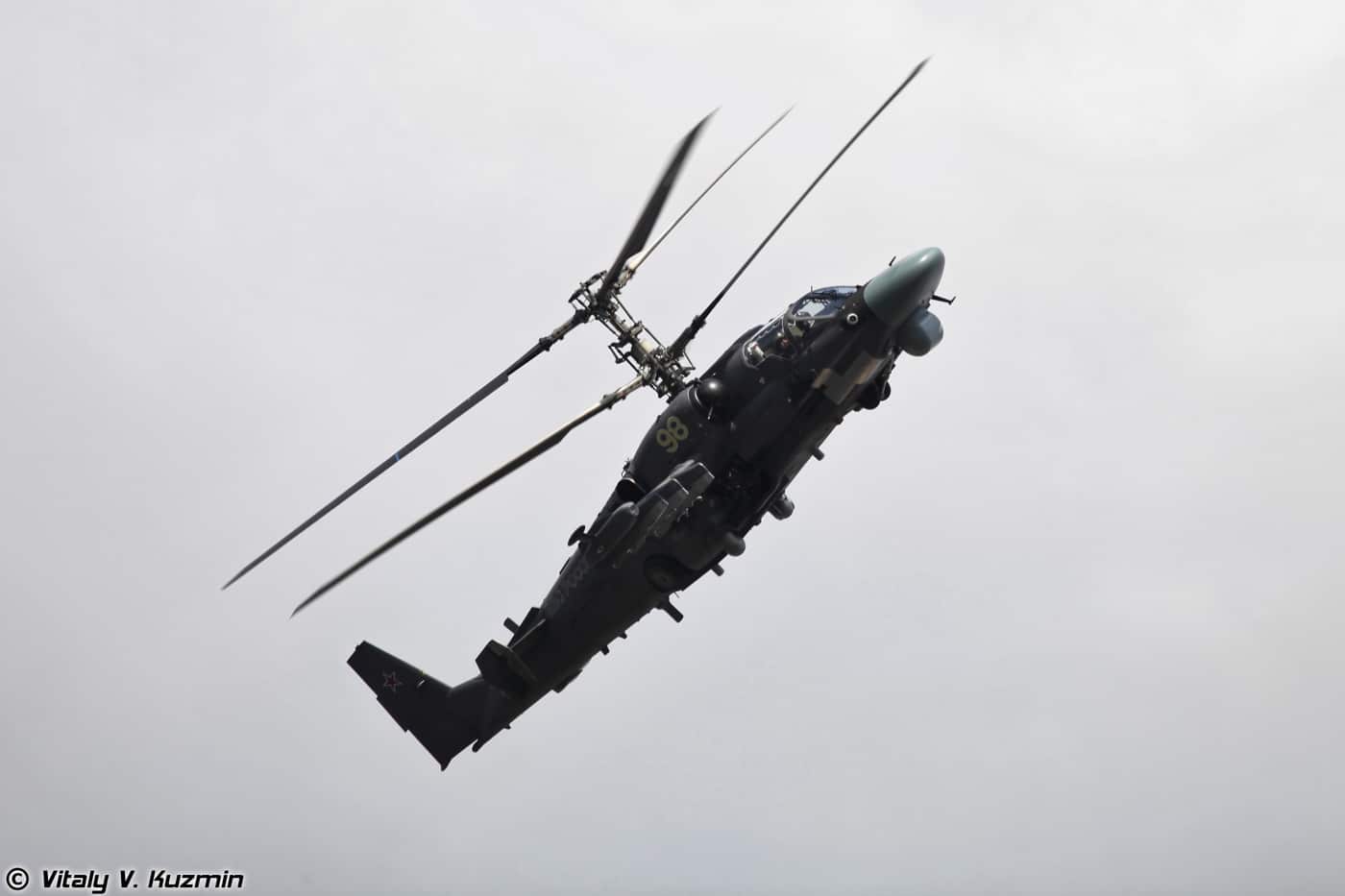Much has been made in the Western media and shared across the social platforms of the potentially thousands of Russian tanks and other armored vehicles that have been destroyed in Ukraine since the Kremlin launched its unprovoked invasion in February 2022. However, less attention has been paid to the nearly three dozen Ka-52 “Alligator” reconnaissance and attack helicopters that have been shot down in the fighting.
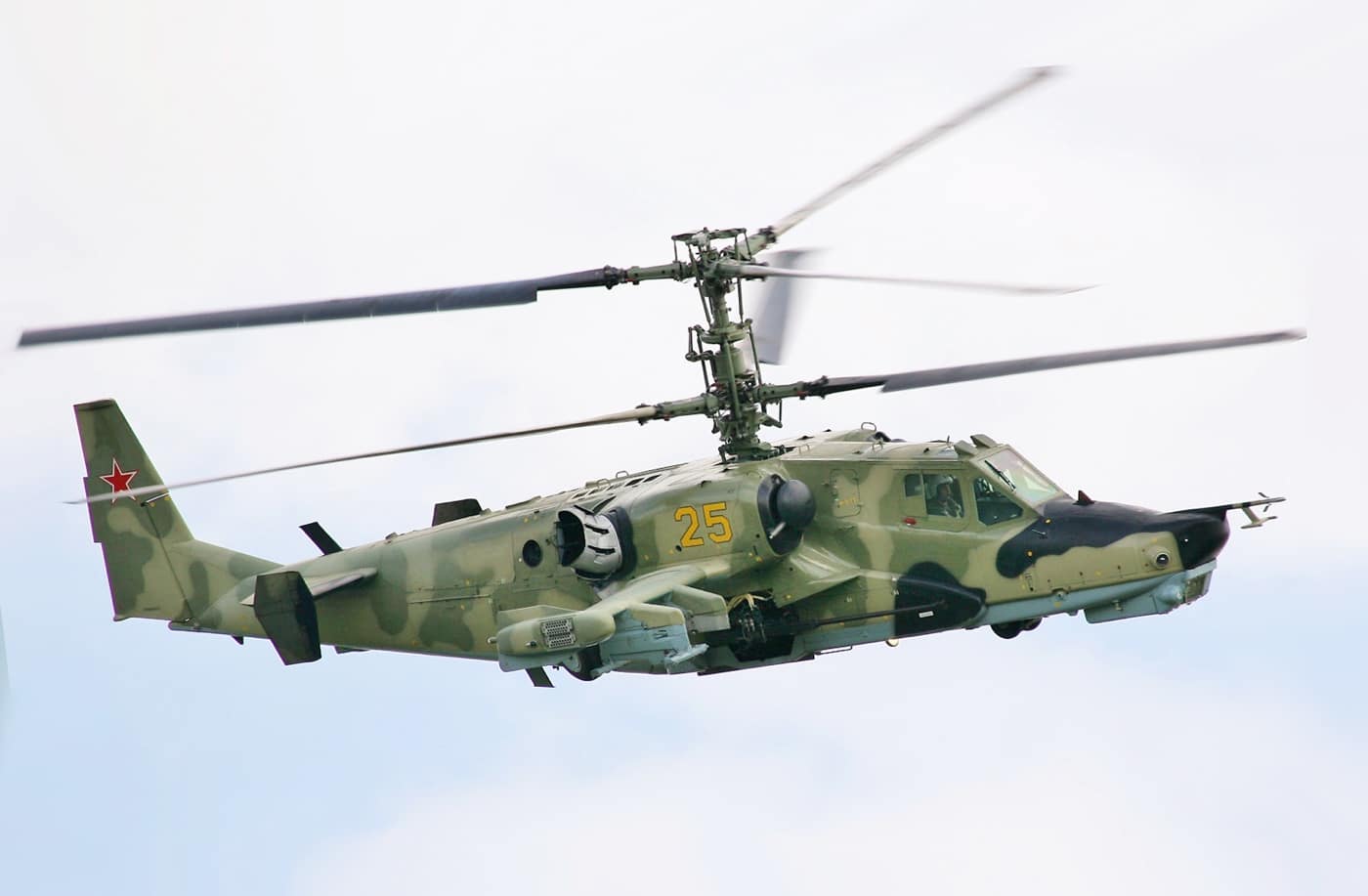
It was on May 24 that the General Staff of the Armed Forces of Ukraine (AFU) claimed its soldiers successfully downed one of these rotary aircraft. Though unconfirmed, it would be a significant setback for the Kremlin, which only produced about 170 of the Russian helicopters, with each costing roughly $16 million. The AFU didn’t specify which unit had downed the Ka-52.
In early April, the Ukrainian 10th Separate Mountain Assault Brigade “Edelweiss” had claimed on Facebook to have destroyed a Ka-52 helicopter with a Piorun portable air-defense system. That particular incident reportedly occurred near the fiercely contested city of Bakhmut.
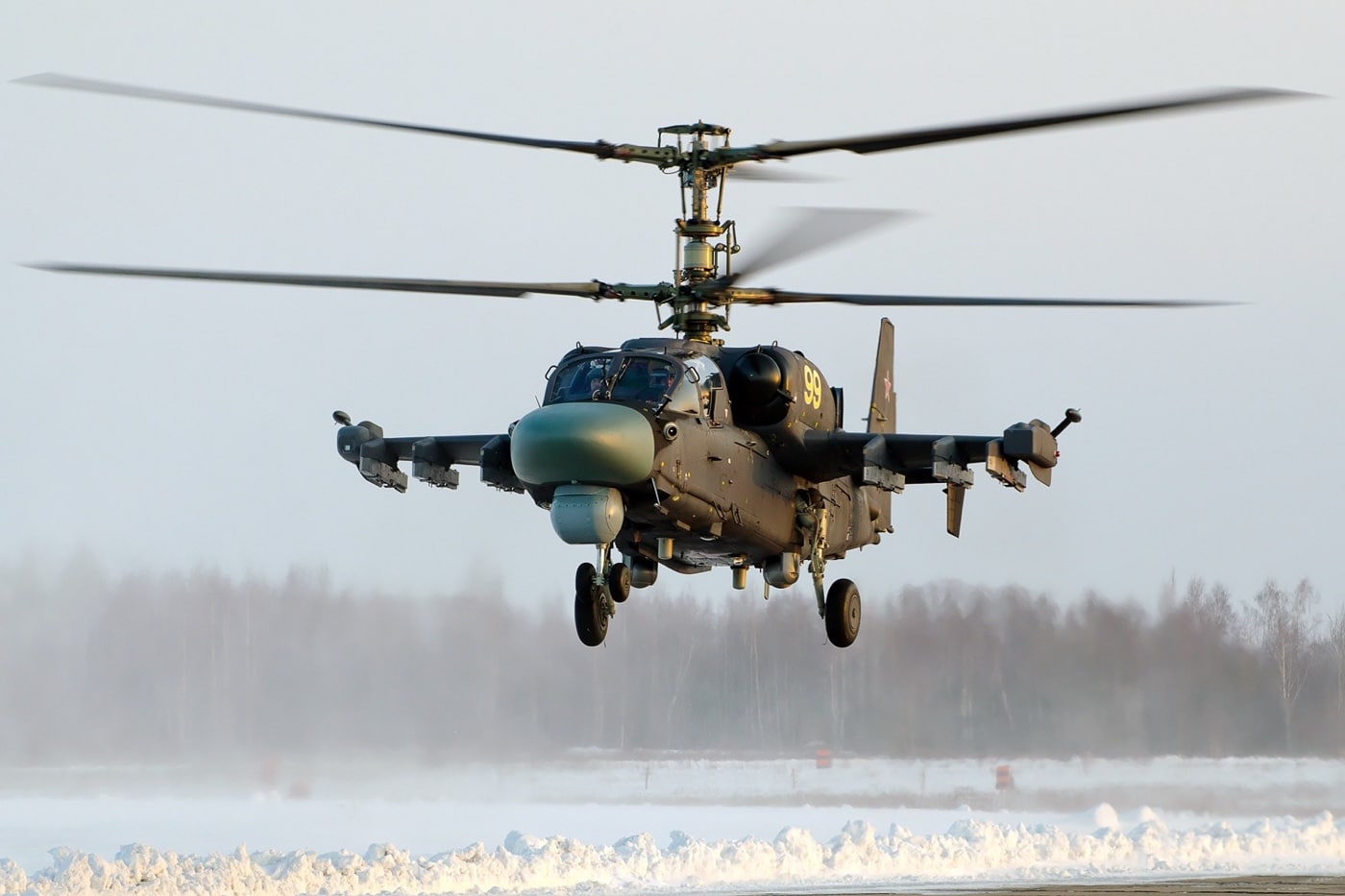
There are reports that upwards of one-third of the 100 or so Russian Ka-52s that were in service at the start of the war have been destroyed.
The first Russian Ka-52 lost in Ukraine was confirmed destroyed in the opening weeks of the invasion when it was hit by a surface-to-air missile (SAM). Another had reportedly been damaged on the first day of the invasion on February 24, 2022, but it was able to land on its own. It remains unclear if it was returned to service.
The Washington-based think tank, the Institute for the Study of War (ISW), described the Ka-52 as being generally comparable to the U.S. Army’s AH-64 Apache.
Origins of the Ka-52 Attack Helicopter
Though aviation innovator Nikolai Ilyich Kamov died in November 1973, nearly a decade before the Soviet military adopted the Ka-52, his impact is seen with the rotary aircraft. The Soviet aerospace engineer was a pioneer of helicopter design, and he founded the Kamov Design Bureau.
[Note: Today, the Kamov Design Bureau is part of Russian Helicopters, a holding company owned by Rostec State Corporation. Rostec is a defense corporation owned by Russia.]
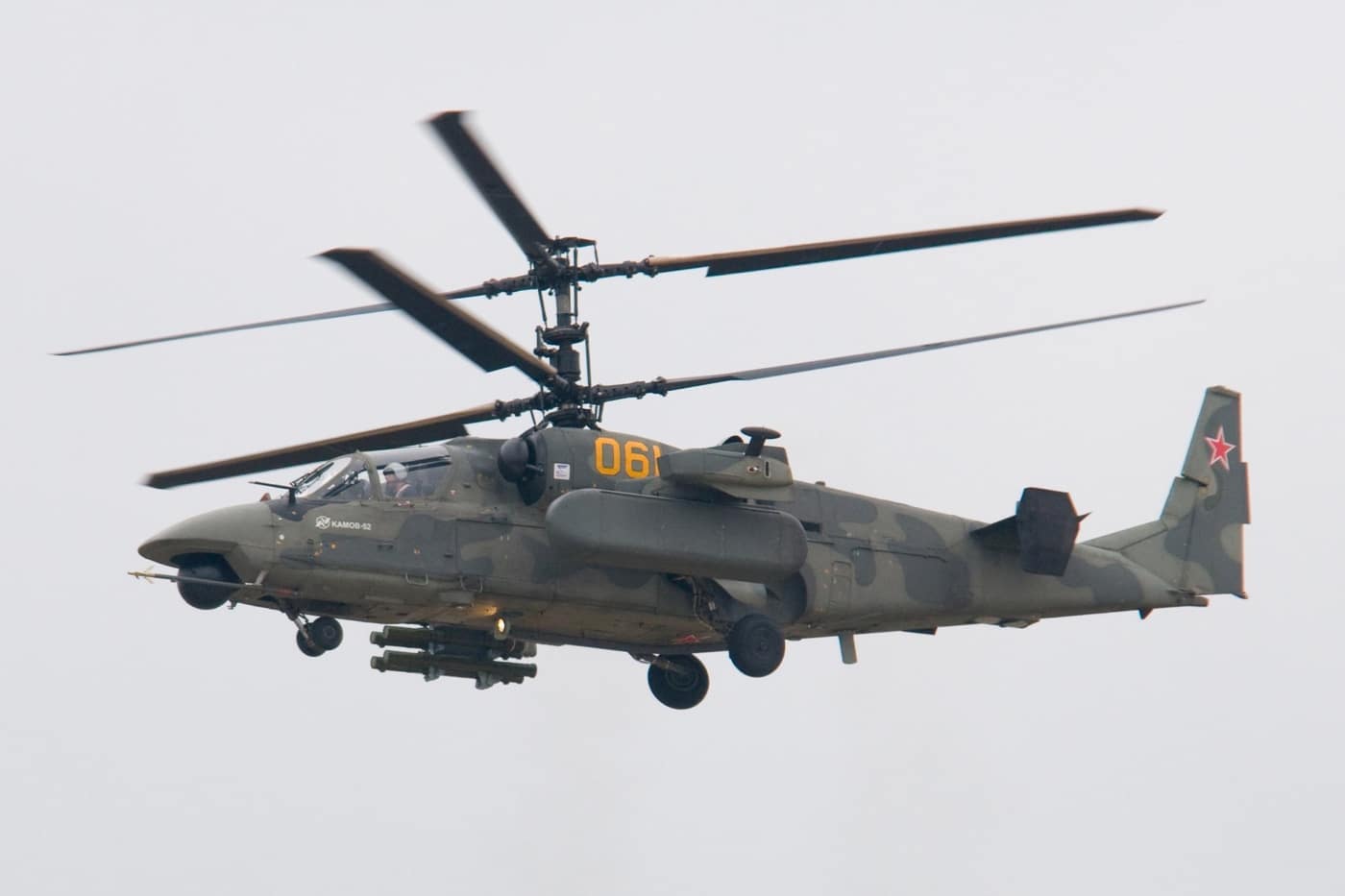
A characteristic of nearly all his designs, beginning with the Ka-8 Irkutyanin developed immediately after the Second World War, was the use of superimposed co-axial rotors to give a greater amount of lift to the vehicle. This was perfected with the Kamov Ka-15 (NATO reporting name “Hen”), a two-seat utility helicopter. It first flew in April 1952, and it went on to become the world’s first mass-produced coaxial rotary aircraft.
This eventually led to the development of the Kamov Ka-50 “Black Shark” (NATO reporting name “Hokum A) in the 1980s. Progress was slow, however, with operational testing being conducted from early 1985 through the middle of 1986. The advantage of its coaxial contra-rotating rotor system was that it removed the need for the entire tail rotor assembly and also improved the helicopter’s aerobatic capabilities. Though it reportedly requires a skilled (perhaps even daring) pilot, the Black Shark could perform loops, rolls, and “the funnel” (circle-strafing).
The Ka-50 was also noted for featuring a NPP Zvezda K-37-800 ejection seat to provide greater pilot survivability. The system actually blows away the rotor blades before an ejection seat deploys. How successful this is in practice isn’t entirely clear.
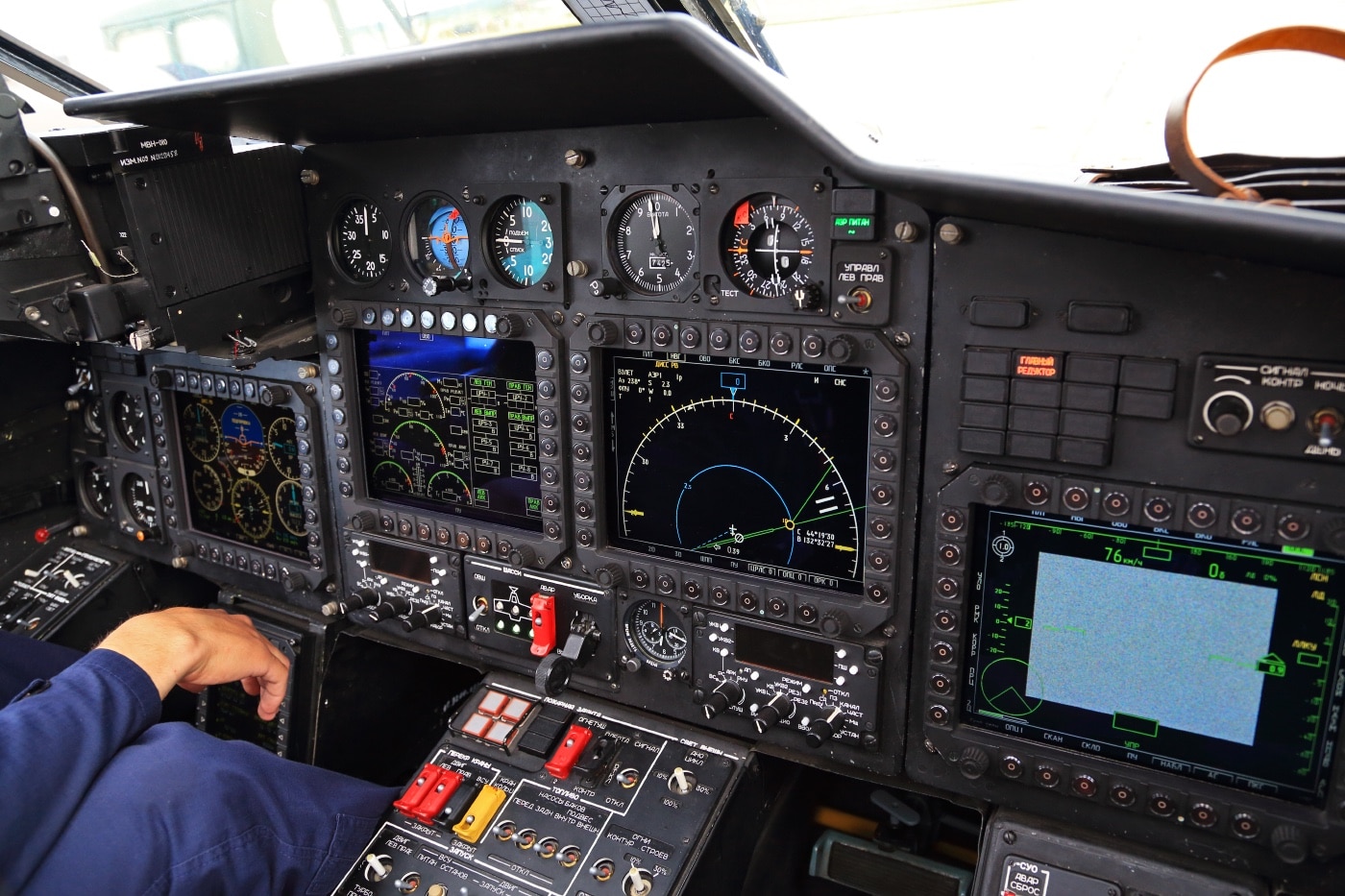
The single-seat attack helicopter only finally entered service with the Russian Army in 1995, although fewer than two dozen are believed to have been built. Even as the development of the Ka-50 continued, the Kamov design team opted to produce a helicopter that could be utilized to conduct battlefield reconnaissance, provide target designation, support and coordinate group attack helicopter operations.
That effort led to the development of a two-seat variant of the Black Shark, where the second crew member could operate the optronics/radar reconnaissance suite. Kamov’s designers also opted to employ a side-by-side seating arrangement, which was meant to improve cooperation between the pilot and co-pilot.
The Ka-52 “Alligator” in the Crosshairs
This twin-seat variant was subsequently designated the Ka-52 “Alligator” (NATO reporting name “Hokum B”). Today, the twin-seat, all-weather attack aircraft is considered among Russia’s best attack helicopters. It can be armed with anti-tank and air-to-air guided missiles, while it is also fitted with a 30 mm main gun.
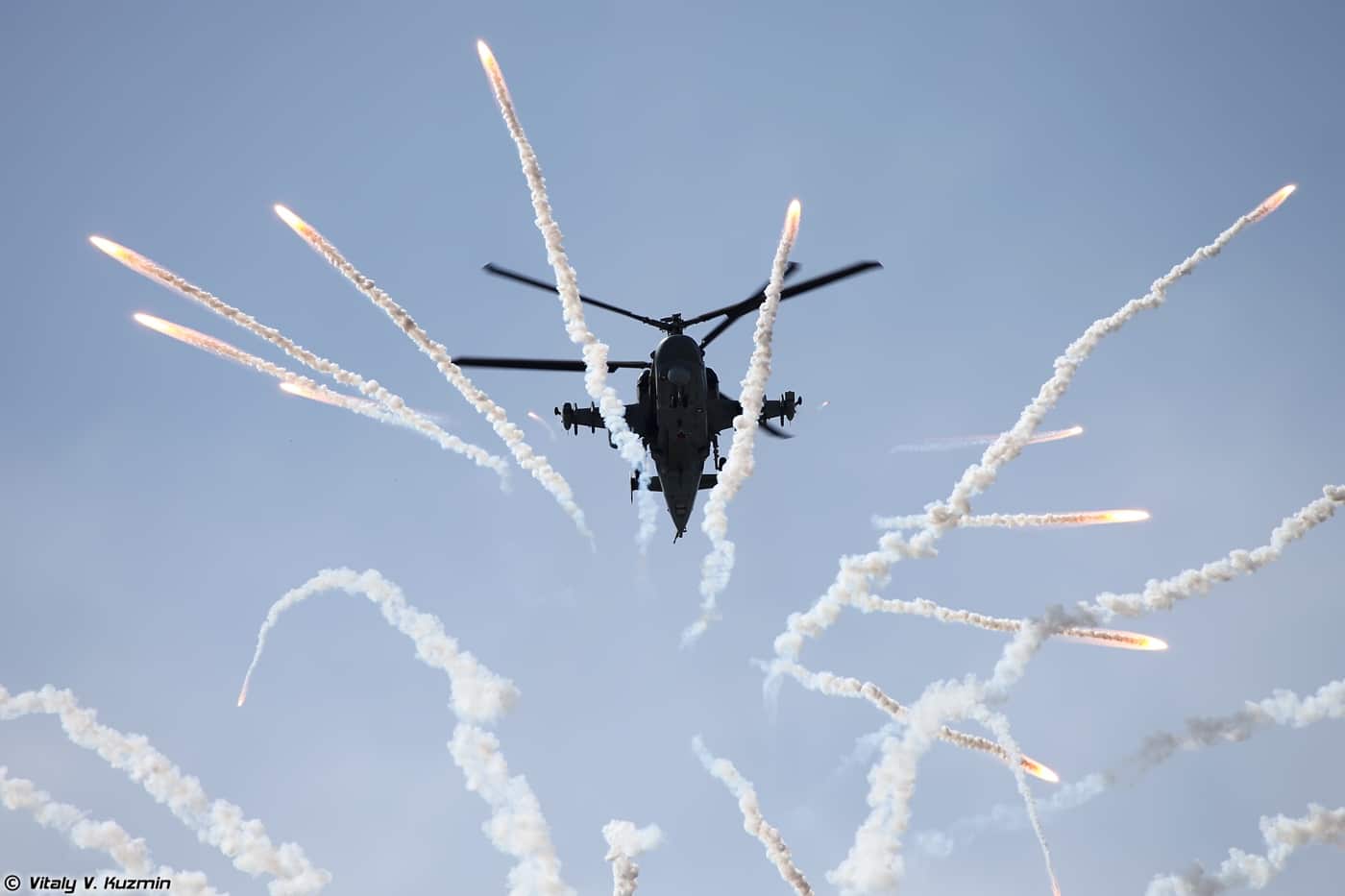
According to Russian state media, the Ka-52 can provide target acquisition and designation while it is furnished with signature control devices, electronic warfare, and active anti-jamming systems. The rotary aircraft was also designated to destroy tanks, armored and non-armored vehicles, manpower, rotorcraft, and other enemy aircraft on the frontline and in the tactical depth, in any weather conditions, and at any time.
